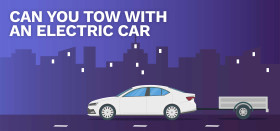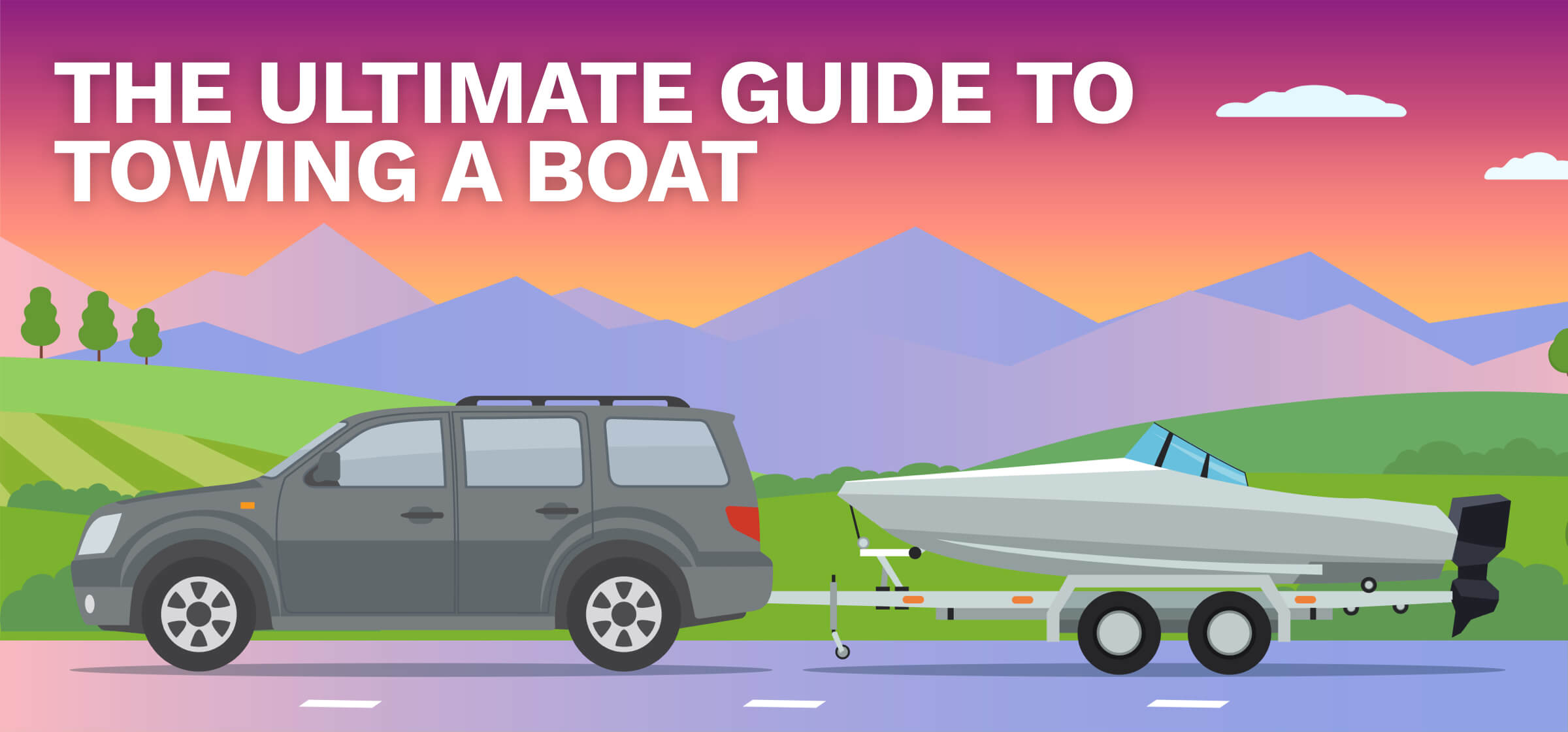
The Ultimate Guide to Towing a Boat
Whilst some people are fortunate enough to have a lake or oceanfront property, everyone else in the boating community has resorted to having to transport their boats via roads. But towing a boat needs to be undertaken with care and consideration.
If you are a newbie to boat towing there may be laws and guidance that you're not familiar with. Some examples would be knowing what kind of towbar you need for your vehicle, what you can tow based on your current driver's licence and how to get the boat on your trailer in the first place.
In this article we will be covering the following questions, so you can learn how best to get your boat on the road (and then in the water):
- What driving licence do I need to tow a boat?
- What are the rules and regulations for towing a boat?
- How to get a boat on a trailer
- Which towbar do I need to hitch by boat trailer?
- How to drive safely with a boat in tow
What driving licence do I need to tow a boat?
UK Driving licence entitlements have been updated over the years and can be a little confusing. In December 2021, the UK government removed car and trailer towing tests as a legal requirement. So by default, all licence holders can tow.
However, there are different rules based on when you obtained your driver's licence.
Category B (car and small vehicle) licences issued after 19th January 2013 allow you to:
- Tow a small trailer up to 750kg weight.
- Tow a larger trailer provided the combined vehicle plus trailer weight is less than 3500kg
Category B licences issued between 1st January 1997 and 19th January 2013 allow you to:
- Tow a trailer that weighs more than 750kg if the weight of the trailer does not exceed the unladen weight of the vehicle.
Category B licences issued before 1st January 1997 allow you to:
- Drive a vehicle and trailer combination that weighs up to 8250kg Maximum Authorised Mass (MAM).
To tow a trailer weighing more than 750kg when the combined weight of the towing vehicle and trailer is more than 3,500kg, you'll have to pass a further test and get a BE entitlement on your licence. You'll then be able to tow trailers over 3,500kg.
For your safety, you need to make sure your vehicle is capable of towing your boat. Your vehicle owner's manual will have information indicating the maximum trailer weight and Maximum Authorised Mass.
Most trailer manufacturers are careful to provide a trailer with plenty of capacity for the boat, but if you are carrying a lot of extra gear you could run the risk of cutting it close. We would recommend double checking that you aren't over the legal weight limit before you drive off.
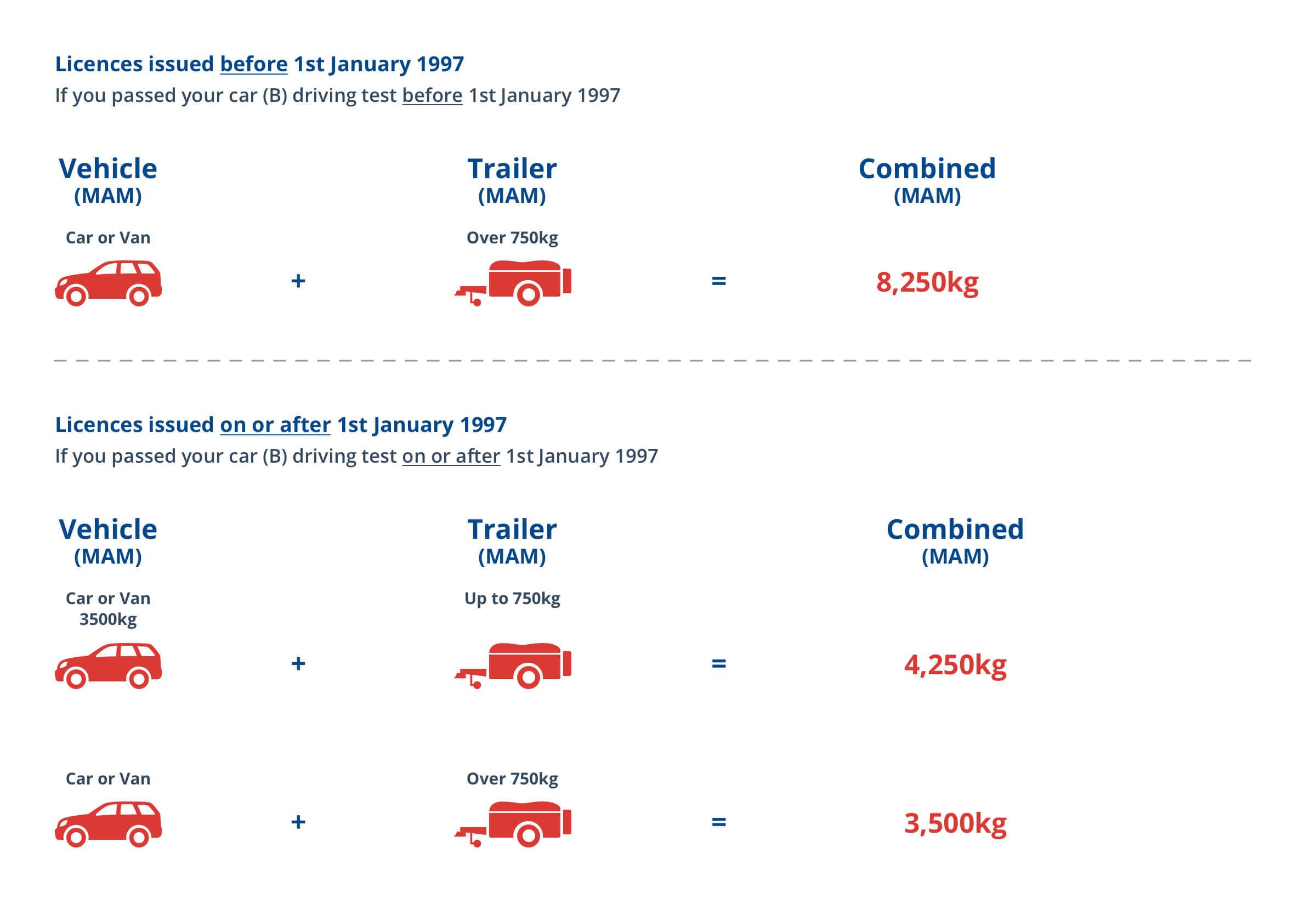
What are the rules & regulations for towing a boat?
Speed limits
When towing a boat on single-carriageway roads, the 60mph national speed limit is reduced to 50mph. When towing a boat on motorways and dual-carriageways the 70mph limit is reduced to 60mph. Any vehicles towing a boat are prohibited to use the outside lane of a three-lane motorway.
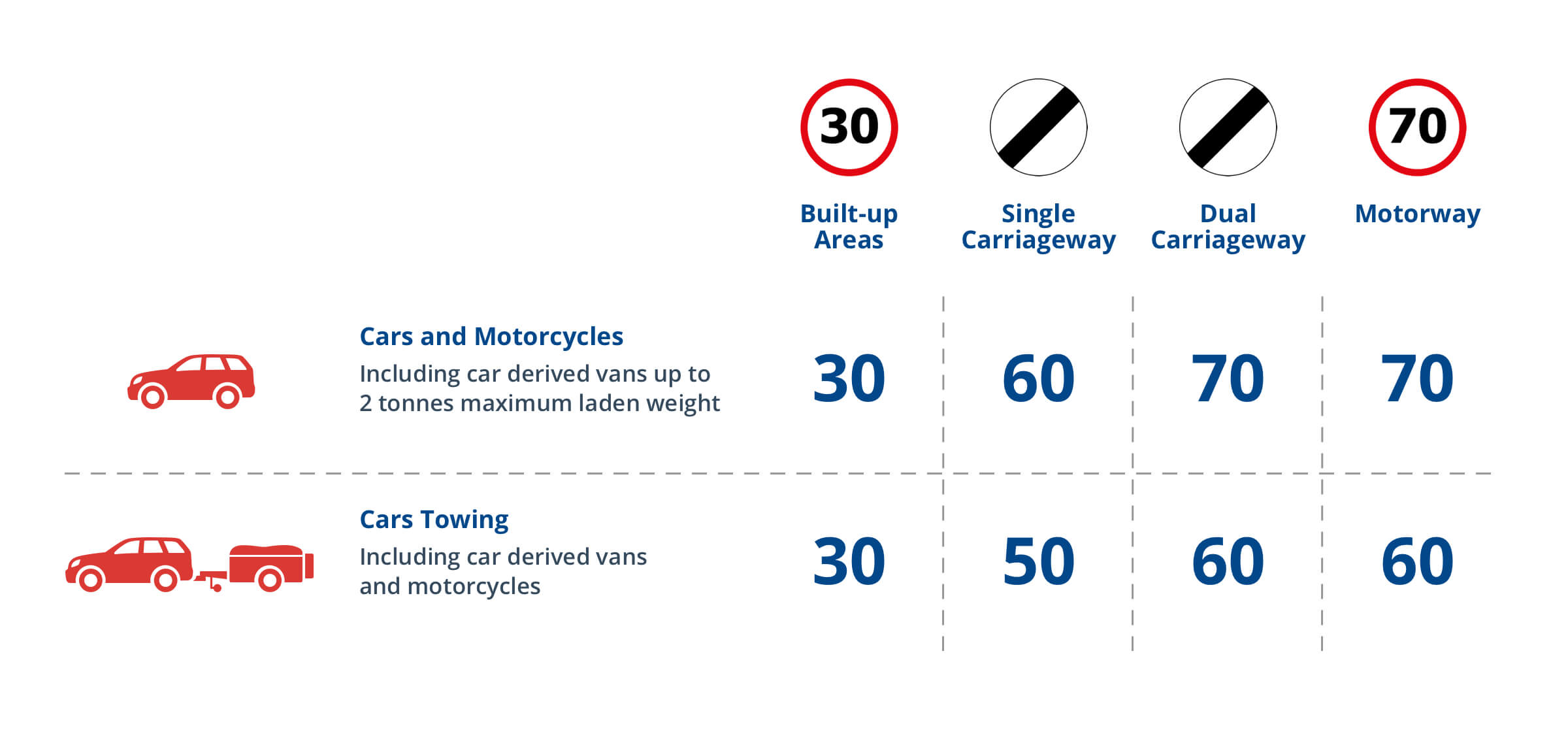
Size limitations
Width: Your boat trailer shouldn't exceed 2.55 metres wide, roughly two standard family cars parked side-by-side. You will need a special permit for anything wider and it could cause problems driving on narrow lanes or country roads.
Length: For vehicles under 3,500kg, the maximum trailer length is 7 metres, excluding the A-frame. But for optimal handling and stability, choosing a slightly shorter trailer based on your boat's size is recommended. For example, a 5-metre trailer might be ideal for a smaller runabout, while a larger cruiser might require closer to the 7-metre limit.
Height: Don't forget the maximum trailer height! Bridges and underpasses often have restrictions, so ensure your boat and trailer combination fits comfortably to avoid any unwelcome surprises.
Overhang: The distance from the trailer's rear axle to your boat's stern is called the overhang and the maximum overhang allowed is 3.05 metres. Think of the overhang as your personal bubble on the road. Going beyond the limit impacts how your trailer handles and what you can see in the mirror. So, double-check those measurements and move things around if needed.
Get more information on towing weight and width limits.
Braking systems
Your boat trailer must have a working brake system if it weighs over 750kg when loaded. Heavier boats in particular will need a proper braking system for better control and stability on the road. Even trailers with lighter hulls might benefit from brakes for added peace of mind, especially when encountering hills or slippery conditions.
Secure your trailer
The worst case scenario when towing a boat is if the trailer detaches from your vehicle, because of this, you must have a breakaway cable or secondary coupling attached from trailer to vehicle.
Secure your boat
A boat should be secured to your trailer in three places; both stern cleats and at the point of the bow. Ratchet straps are better than tow rope when securing your boat as they don't damage the finish.
Check your mirrors
UK Law states that you must have an adequate view of the road behind you, no matter what vehicle you are driving. This means if your boat trailer is wider than the rear of your car, you will need towing mirrors. This can be often overlooked by drivers, but if you fail to provide yourself with enough room to see the road behind you, it can result in a hefty fine of up to £1000 and 3 points on your driver's licence.
Check your lighting
According to the National Trailer & Towing Association (NTTA) as standard trailer lights should consist of:
- Two red sidelights
- Two red stop lamps
- An illuminated number plate
- Two triangular red reflectors
- Amber indicators that flash between 60 and 120 times per minute.
Additional requirements are dependent on the weight and size of your trailer.
Check your insurance
Consider what your car insurance policy covers you for when it comes to towing. Most standard car insurance only covers trailers attached at the time of an incident, whereas specialist trailer insurance protects you against damage to the trailer at all times and also injury to others during an accident.
How to get a boat on a trailer
Successfully loading your boat from water to trailer can sometimes be tricky as it can be weather dependent as well as terrain dependent. If you are unsure on what to do, or are planning to do it for the first time, follow these tips to successfully load your boat onto a trailer.
Step 1: Reverse your vehicle towards the launch-ramp dock, when in position put the handbrake on.
Step 2: Your trailer should be backed into the water as straight as possible, and at a depth that allows the boat to float over the rear two-thirds of the trailer.
Step 3: Align the bow peak with the trailer's bow stop.
Step 4: When the bow bumps the bow stop, clip the winch strap to the bow eye and then use the winch to pull the boat closer.
Step 5: Secure the safety chain or ratchet straps.
Step 6: Tilt the boat's motor up and drive slowly forwards, pulling the boat out of the water.
Step 7: Perform safety checks to make sure the boat is secure on the trailer, before you drive off.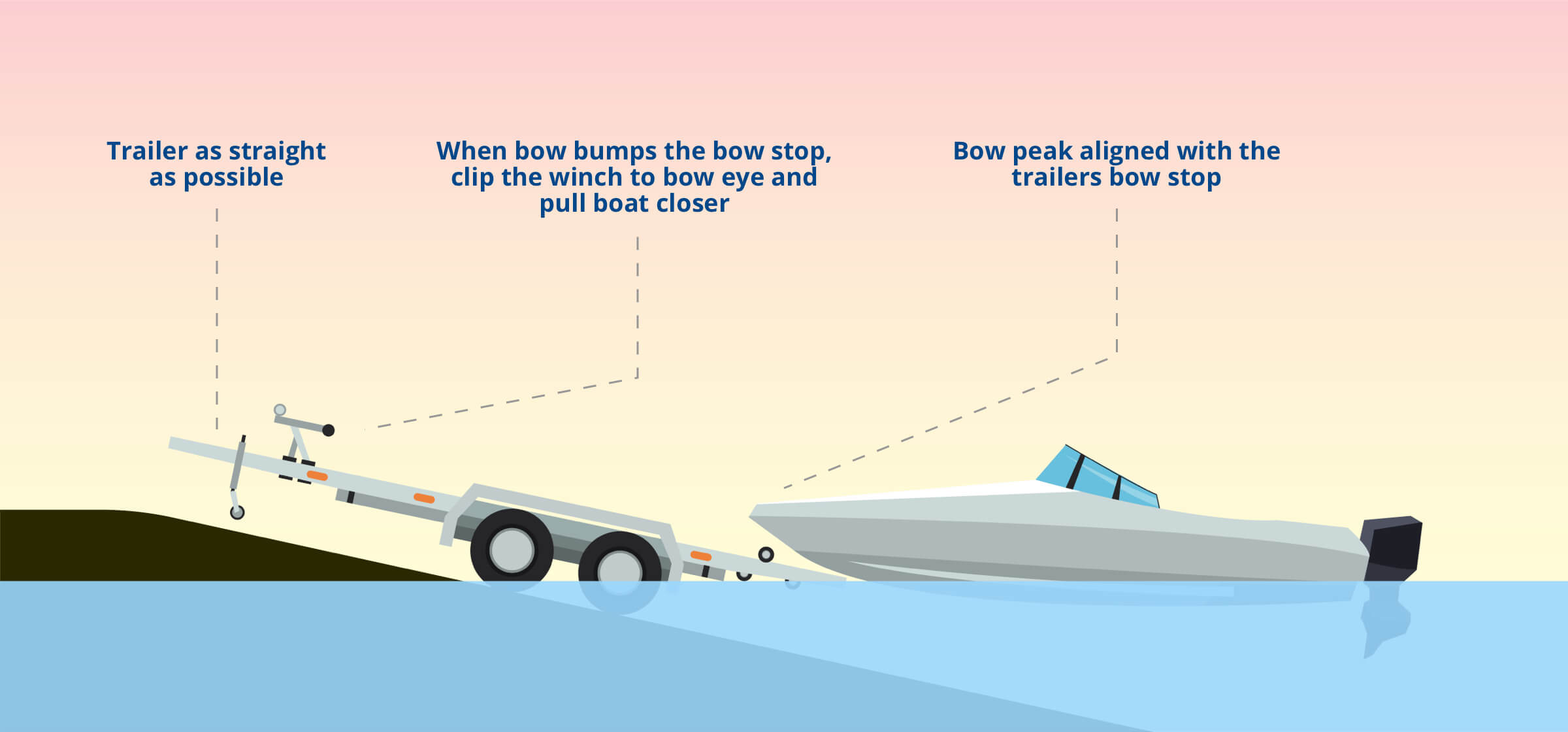
Which towbar do I need to hitch my boat trailer?
Witter sells a range of towbars for adventurous lifestyles - including hitching trailers that are carrying boats. Sometimes it comes down to personal preference on the look of the towbar, other times your choice of towbar can be down to how often you plan to use it. Our range of towbars consists of the following:
Fixed Flange: The towball is bolted onto your vehicle's faceplate and is permanently attached. This is ideal for serious towing, including towing heavier loads such as boats and other vehicles.
Detachable Flange: This towbar is similarly robust and versatile like the fixed flange, but the detachable flange comes with the added benefit of being removable. This is perfect for the summer boat season if you only use a towbar during this time.
Fixed Swan Neck: With a sleeker design, the fixed swan neck is more aesthetically pleasing. However, if you are planning to use bikes as well as a boat, know you cannot tow a boat and carry bikes at the same time when using this towbar.
Detachable Swan Neck: With the same visual appeal as the fixed swan neck, you are also able to remove this when you are not towing, which is ideal for the summer if you only plan to tow boats during this time. But like the fixed swan neck, you can't tow and carry bikes at the same time.
Retractable Towbar: When not in use, it can be folded away out of sight in a matter of seconds. This offers the same advantages as the detachable towbars, but when boat season comes around, you won't have to reattach this towbar when you need to use it again.
Check out our range of towbars today and see what works for your trailer.
How to drive safely with a boat in tow
Before you head out on the road, there are some checks you should perform for some peace of mind, and there are some helpful tips and towing knowledge you should learn that will come in handy. The last thing you want is an issue to occur once you're already out and about.
Before you set off…
- Make sure the bow strap and boat safety chain are secure.
- Check your nose weight, it should be about 10-15% of your load. If this is incorrect the trailer may start swaying or snaking, which is extremely dangerous.
- Complete a lights check to make sure that your brake, indicator and rear lights on your trailer are all working properly, prior to your journey.
When you're driving…
- Take those turns as wide as possible so you don't clip any obstructions that you're not aware of, such as curbs.
- Leave extra room in front of you when driving, this is because your stopping distance will be increased because of the extra weight of the trailer and the boat behind you.
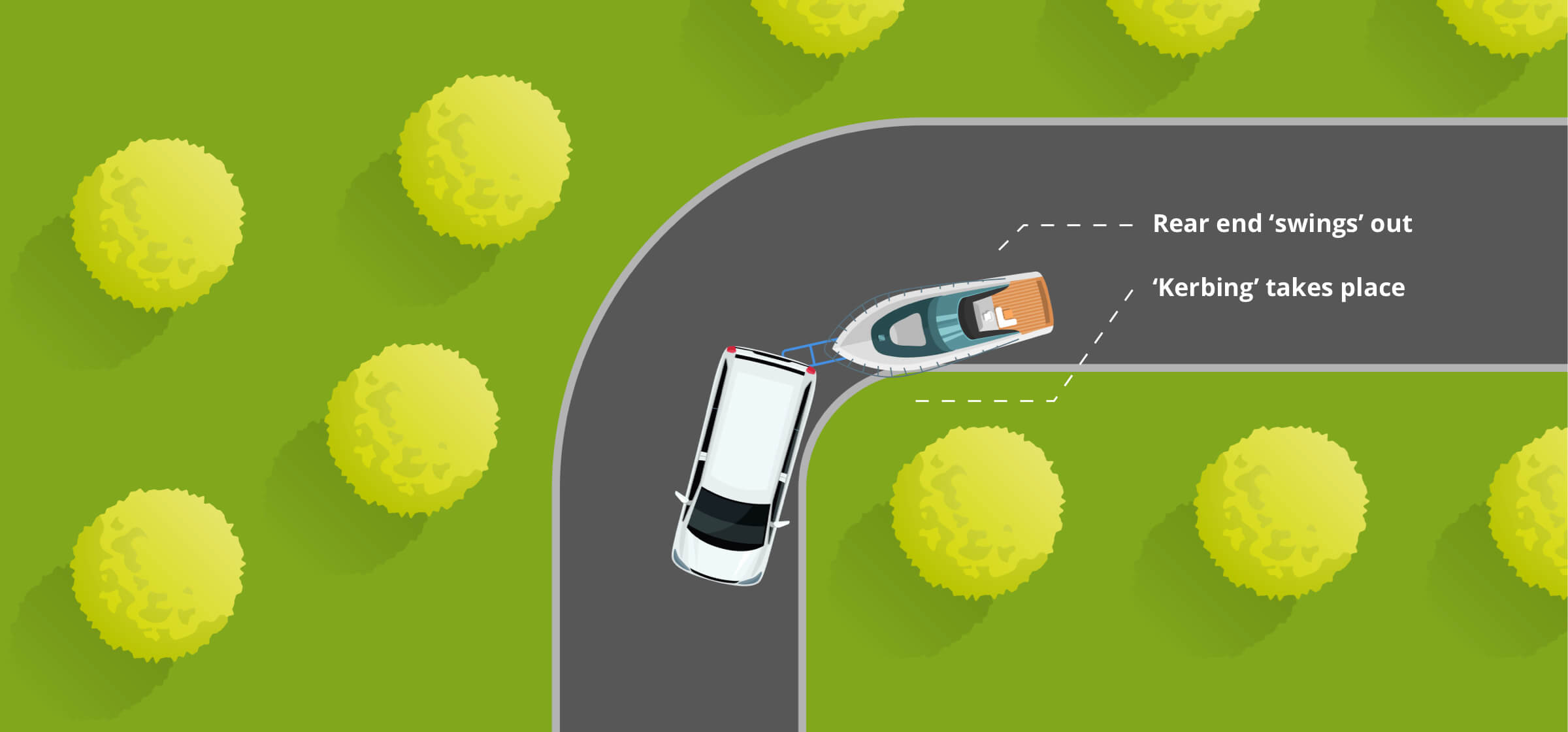
So, if you're all ready to get your boat on the road, enjoy it! Sailing can be one of the most relaxing pastimes and it can be a peaceful experience, granted everything went smoothly with your journey.
As long as you are using a reliable towbar, towbar accessories and your boat is carefully loaded, it should be plain sailing.

